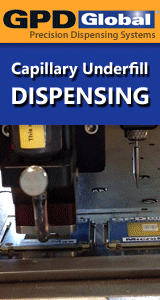Printed Circuit Board Assembly & PCB Design Forum
SMT electronics assembly manufacturing forum.
- SMTnet
- »
- Electronics Forum
- »
- Cracked ceramic chip capacitors.
Cracked ceramic chip capacitors.
![]() Hi,
My company is currently experiencing a high feild fai...
- Apr 10, 2003
by
Hi,
My company is currently experiencing a high feild fai...
- Apr 10, 2003
by
![]()
![]() I had a similar problem with cracked caps. I checked all my ...
- Apr 10, 2003
by
PeteC
I had a similar problem with cracked caps. I checked all my ...
- Apr 10, 2003
by
PeteC
![]()
![]()
![]() Are you gluing the parts to the board? We had a similar sit...
- Apr 10, 2003
by
steve moore
Are you gluing the parts to the board? We had a similar sit...
- Apr 10, 2003
by
steve moore
![]()
![]()
![]() I've also seen "as received" defective devices. A tier 1 EMS...
- Apr 10, 2003
by
I've also seen "as received" defective devices. A tier 1 EMS...
- Apr 10, 2003
by
![]()
![]() Hello,
Regarding the failures not showing up at ICT. Fai...
- Apr 11, 2003
by
Hello,
Regarding the failures not showing up at ICT. Fai...
- Apr 11, 2003
by
![]()
![]() Cracked capacitors usually are not found at ICT. Unless ...
- Apr 11, 2003
by
Cracked capacitors usually are not found at ICT. Unless ...
- Apr 11, 2003
by
![]()
![]() Hi
A lot of good answers.
"No verification was done on...
- Apr 11, 2003
by
Hi
A lot of good answers.
"No verification was done on...
- Apr 11, 2003
by
![]()
![]()
![]() DST,
What was the crack signature? Was the crack paralle...
- Apr 18, 2003
by
Takfire
DST,
What was the crack signature? Was the crack paralle...
- Apr 18, 2003
by
Takfire
![]()
![]()
![]() Please elaborate on "De-paneling method" vs. boards being "s...
- Apr 18, 2003
by
adlsmt
Please elaborate on "De-paneling method" vs. boards being "s...
- Apr 18, 2003
by
adlsmt
![]()
![]()
![]() May be a little late for you, but we experienced the some pr...
- Jun 21, 2004
by
May be a little late for you, but we experienced the some pr...
- Jun 21, 2004
by
dst
- SMTnet
- »
- Electronics Forum
- »
- Cracked ceramic chip capacitors.








